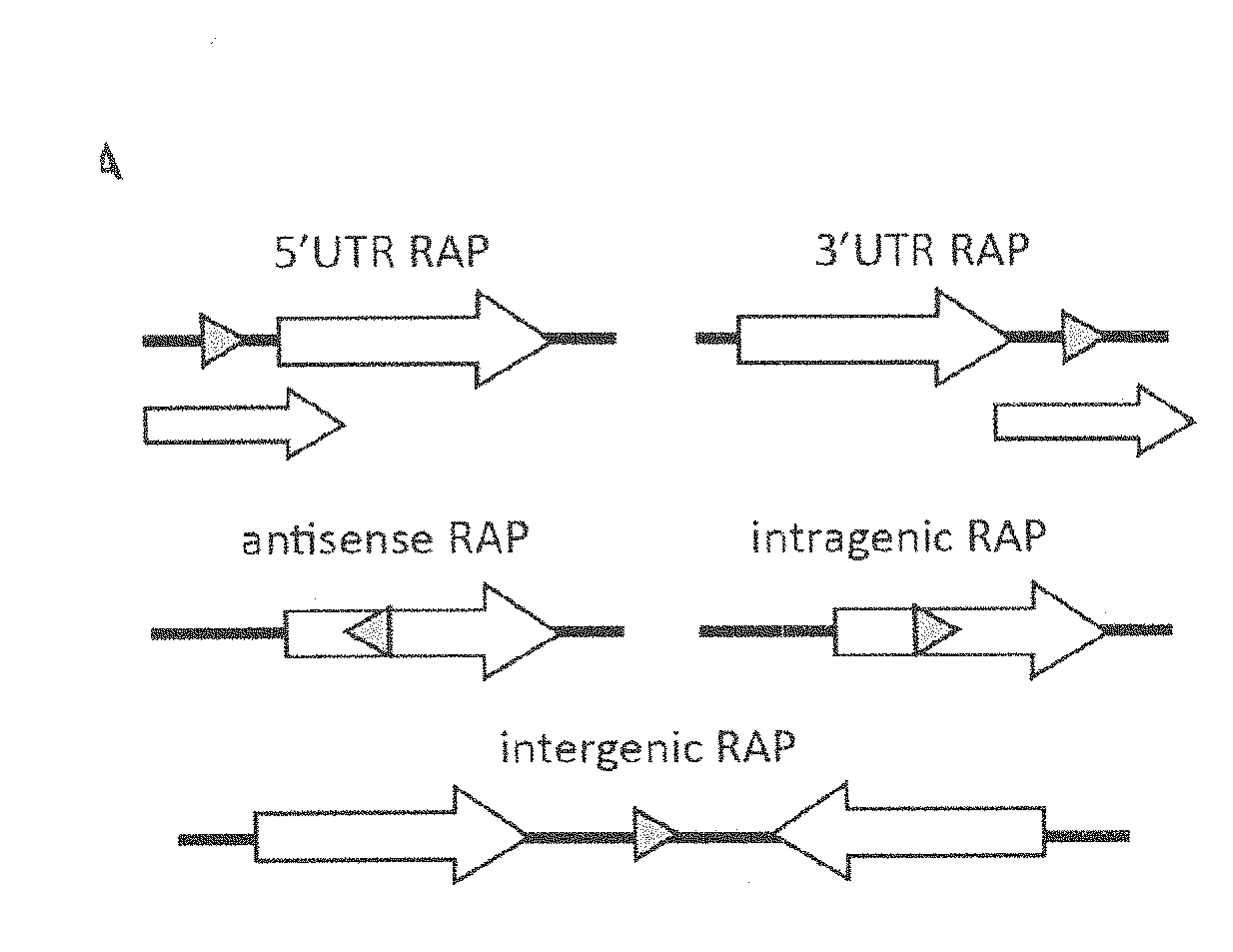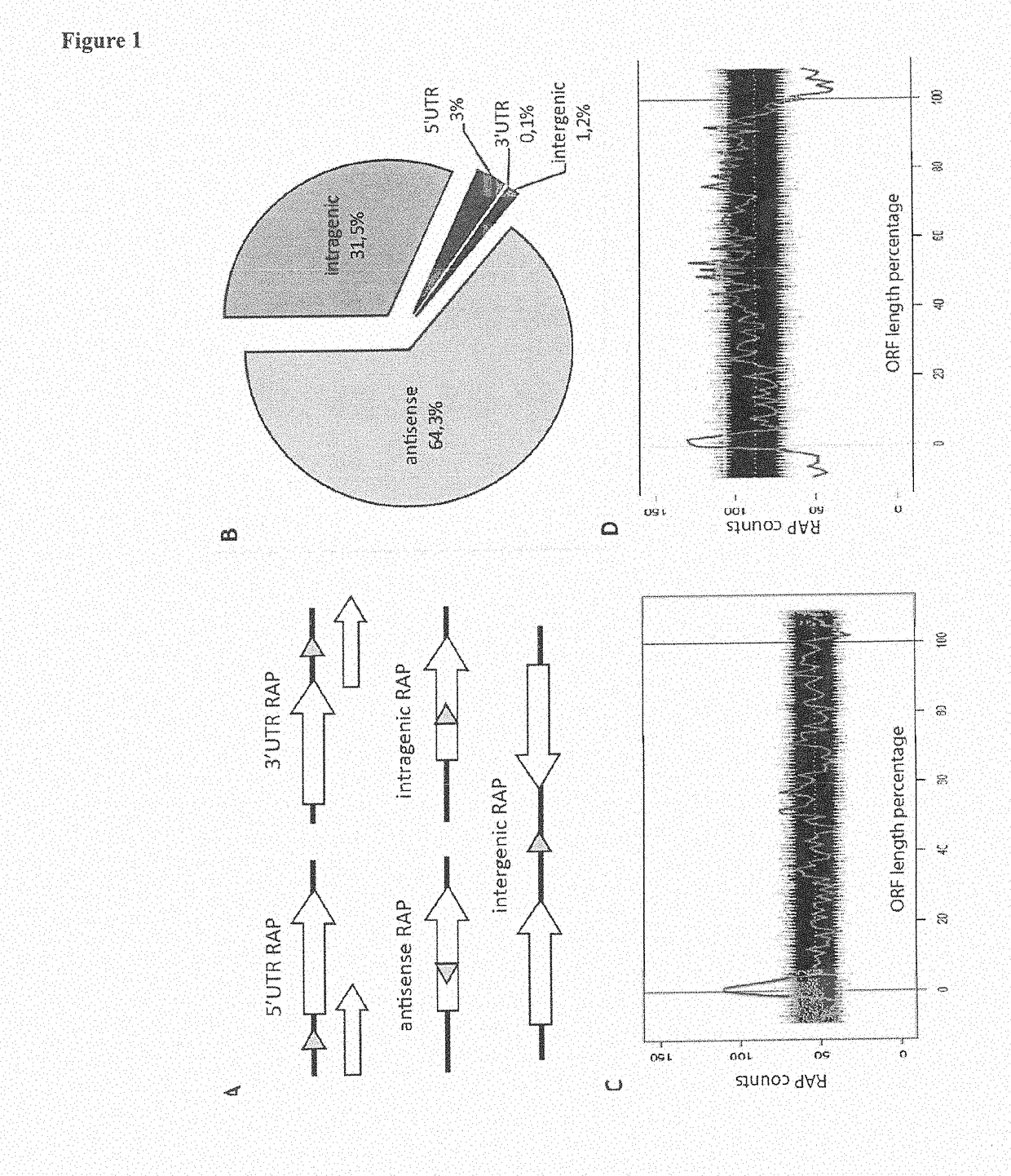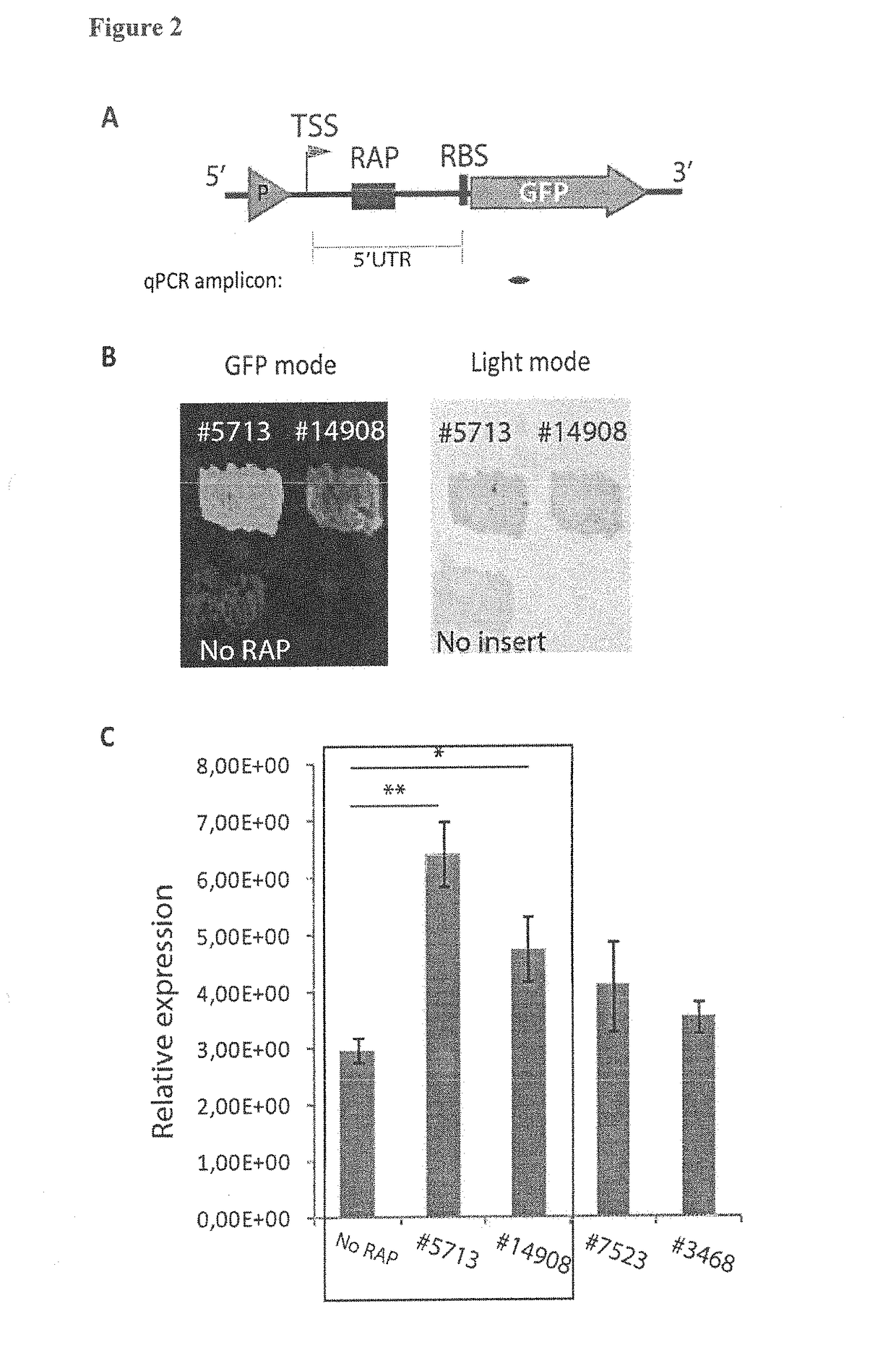Novel expression regulating rna-molecules and uses thereof
a technology of rna molecules and expression regulation, applied in the field of biotechnology, can solve the problems of loss of transcription efficiency, difficult design, unwanted restriction of expression,
- Summary
- Abstract
- Description
- Claims
- Application Information
AI Technical Summary
Benefits of technology
Problems solved by technology
Method used
Image
Examples
example 1
tion Enhancing RNA-Polymerase Binding Aptamers
[0232]Identification of RAPs that Promote Activation of Transcription
[0233]To monitor the potential effect of identified RAPs on transcription, they were tested using a plasmid-based GFP reporter pWM3110 (see FIG. 2A; and supra). Several representative RAPs were cloned into the 5′UTR of the reporter construct (distance downstream of TSS—72 nt, distance upstream of GFP's RBS—56 nt). The obtained clones were tested in the E. coli GFP plate assay to estimate the amount of fluorescent protein synthesized in each case. By this approach a number of RAPs could be identified as listed in Table 1—e.g., RAP ID #5713 (SEQ ID NO:2) and #14908 (SEQ ID NO:4)—with a novel mode of activity: they significantly increased the amount of GFP produced (FIG. 2B). The inventors also performed qRT-PCR to directly measure the amount of full-length GFP transcript, confirming the results of the protein assay: for example, RAPs #5713 and #14908 increase transcriptio...
example 2
tion Inhibiting RNA-Polymerase Binding Aptamers
[0251]Identification of RAPs that Inhibit Transcription
[0252]The enriched sequences obtained under the most stringent selection conditions (7 cycles of genomic SELEX) were deep-sequenced and ˜1.0 million reads were mapped to the E. coli K12 MG1655 genome followed by peak calling using a custom algorithm. Overall, we identified over 15,000 RAPs—RNA aptamers with high affinity to RNAP—in the E. coli genome (Table S1). The Kd of the total selected pool was shown to be below 10 nM (see N. Windbichler, F. von Pelchrzim, O. Mayer, E. Csaszar, R. Schroeder, RNA Biol. 5, 30-40). The majority of RAPs (64.3%) maps antisense to genes and approximately ⅓ of them (31.5%) are intragenic (FIG. 1, A-B). The positive control, 6S RNA (see K. M. Wassarman, G. Storz, Cell. 101, 613-23 (2000); and A. T. Cavanagh, K. M. Wassarman, Annu. Rev. Microbiol. (2014), doi:10.1146 / annurev-micro-092611-150135), was detected within the identified RAPs (RAP #10012, Tabl...
PUM
| Property | Measurement | Unit |
|---|---|---|
| concentration | aaaaa | aaaaa |
| concentration | aaaaa | aaaaa |
| length | aaaaa | aaaaa |
Abstract
Description
Claims
Application Information
 Login to View More
Login to View More - R&D
- Intellectual Property
- Life Sciences
- Materials
- Tech Scout
- Unparalleled Data Quality
- Higher Quality Content
- 60% Fewer Hallucinations
Browse by: Latest US Patents, China's latest patents, Technical Efficacy Thesaurus, Application Domain, Technology Topic, Popular Technical Reports.
© 2025 PatSnap. All rights reserved.Legal|Privacy policy|Modern Slavery Act Transparency Statement|Sitemap|About US| Contact US: help@patsnap.com



